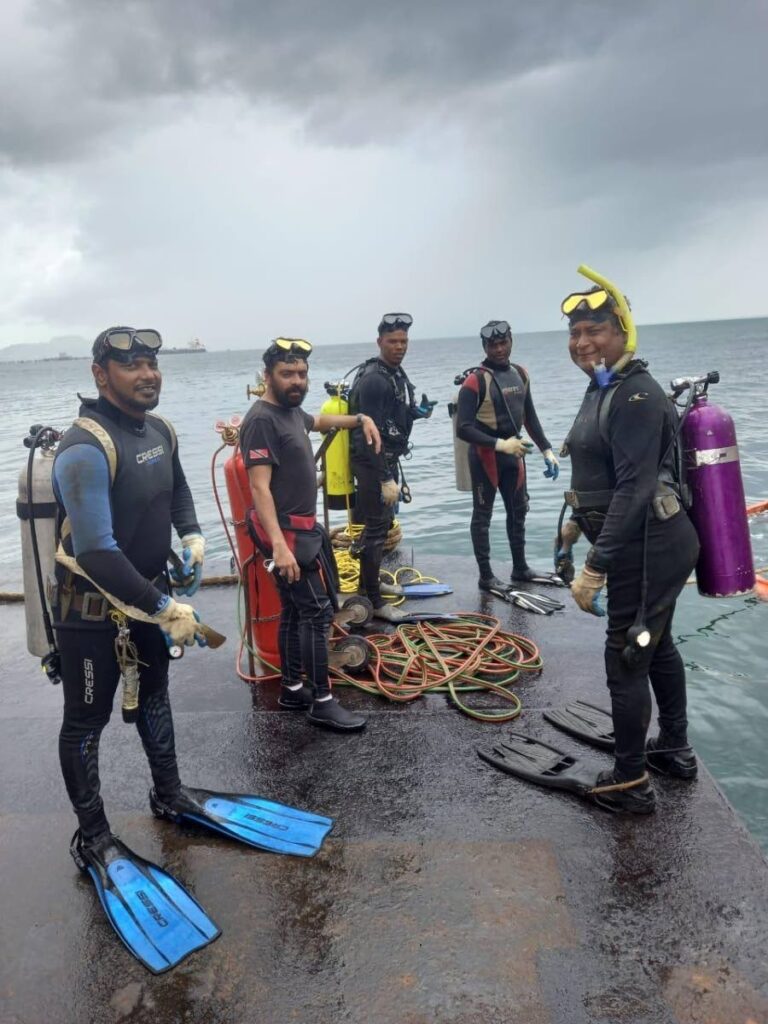Pathologist: Four Paria divers alive between February 25 and 28

Conversations amongst the five divers who went into a 30-inch pipeline at Berth 6, belonging to Paria Fuel Trading Co Ltd at Pointe-a-Pierre on February 25, were heard for the first time on Monday during an evidentiary hearing by the Commission of Enquiry (CoE) into the incident.
The hearing took place at Tower D of the Port of Spain International Waterfront Centre.
Kazim Ali Jr, Fyzal Kurban, Yusuf Henry, Rishi Nagassar and Christopher Boodram were doing routine maintenance on the pipeline when they were sucked into it.
Only Boodram survived.
Counsel to the CoE Ramesh Lawrence Maharaj, SC, said in addition to Boodram's evidence , the commission also obtained video and audio footage from a work camera that Ali had with him at the time of the incident.
Maharaj said the video was lost at the time of the incident, around 2.45 pm on February 25, but the audio was still active.
While saying only six minutes and 55 seconds of the footage would be played, Maharaj advised people who were physically in the room to leave if they were unable to listen to it. He advised people viewing the footage virtually to switch off their devices for a few minutes, if they might find the footage disturbing.
Some of the audio which was played including the following conversations:
"All of we in this together."
"We have to go. We have to start moving."
"I'm trying to come out."
"I'm right behind you."
"You right behind me?"
"My foot break."
Maharaj said when Boodram was rescued, between 4.30 and 4.45 pm, by divers Ronald Ramoutar and Corey Crawford, he indicated that the other divers were still alive and that Kurban was right behind him in the pipeline.
"The four other divers remained alive in the underwater pipeline, and they were not rescued."
Maharaj said LMCS, the divers' employer, and Paria gave evidence of efforts to rescue the four divers before and after Boodram was rescued.
The bodies of Ali, Henry and Kurban were recovered on February 28. Nagassar's body was recovered on March 2.
Post-mortem examinations on the bodies of the dead divers were done by two forensic pathologists
The first exam was done by Prof Hubert Daisley. Daisley's report, Maharaj continued, said Ali "could have have been alive as late as midnight on February 26."
Kurban may have been alive up to 6 pm on February 26. Henry may have been alive up to the early hours of the morning of February 26. Nagassar may have been alive up to midnight on February 25.
Maharaj said a second post-mortem showed Ali, Kurban and Henry may have been alive up to midnight on February 27 and Nagassar up to midnight on February 28.
Referring to the commission's terms of reference, Maharaj said they included determining whether sufficient efforts were made to rescue the divers; whether criminal proceedings could be implemented against any person or entity; and whether such a recommendation should be made to the Director of Public Prosecutions (DPP)
Maharaj also said the commission would determine whether or not adequate safety precautions had been taken to prevent the incident of February 25 from occurring.
With respect to the rescue, Maharaj said LMCS had an initial rescue plan at 3.20 pm on February 25, involving divers with scuba equipment going to rescue the four trapped divers. This was later revised at 6.20 pm to involve pumping surface air into the pipeline to facilitate the rescue.
Maharaj said LMCS submitted in its evidence that Paria prevented it from implementing its rescue plan on the ground that it was unsafe.
Paria, in its evidence, Maharaj continued, said it implemented sea searches for the four divers around 5.45 pm on February 25 after being informed of Boodram's rescue.
CoE chairman Jerome Lynch KC expressed surprise that three hours had passed before Paria became aware that the four divers were trapped in the pipeline.
Maharaj said evidence from the Coast Guard suggested its divers did not have the equipment necessary for commercial sea diving and could not attempt a rescue with only scuba equipment.
He also said a preliminary report on the incident done by the Occupational Health and Safety Authority (OSHA) on April 28, suggested neither LMCS or Paria may have taken possible risks related to sub-sea diving into consideration before the repairs were done on the pipeline.
This included the conditions for a Delta P situation, which is defined as movement from an area of higher pressure to an area of lower pressure.


Comments
"Pathologist: Four Paria divers alive between February 25 and 28"